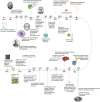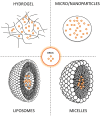Advances in Parkinson's Disease: 200 Years Later
- PMID: 30618654
- PMCID: PMC6306622
- DOI: 10.3389/fnana.2018.00113
Advances in Parkinson's Disease: 200 Years Later
Abstract
When James Parkinson described the classical symptoms of the disease he could hardly foresee the evolution of our understanding over the next two hundred years. Nowadays, Parkinson's disease is considered a complex multifactorial disease in which genetic factors, either causative or susceptibility variants, unknown environmental cues, and the potential interaction of both could ultimately trigger the pathology. Noteworthy advances have been made in different fields from the clinical phenotype to the decoding of some potential neuropathological features, among which are the fields of genetics, drug discovery or biomaterials for drug delivery, which, though recent in origin, have evolved swiftly to become the basis of research into the disease today. In this review, we highlight some of the key advances in the field over the past two centuries and discuss the current challenges focusing on exciting new research developments likely to come in the next few years. Also, the importance of pre-motor symptoms and early diagnosis in the search for more effective therapeutic options is discussed.
Keywords: Parkinson’s disease; drug delivery systems; focused ultrasound; genetics; non-motor symptoms.
Figures
References
-
- Adil M. M., Vazin T., Ananthanarayanan B., Rodrigues G. M. C., Rao A. T., Kulkarni R. U., et al. (2017). Engineered hydrogels increase the post-transplantation survival of encapsulated hESC-derived midbrain dopaminergic neurons. Biomaterials 136 1–11. 10.1016/j.biomaterials.2017.05.008 - DOI - PubMed
Publication types
LinkOut - more resources
Full Text Sources
Molecular Biology Databases
Miscellaneous



